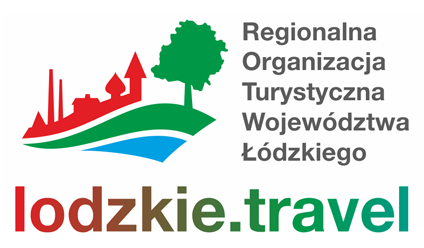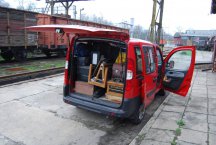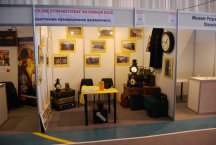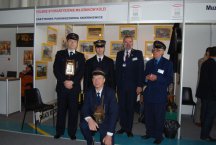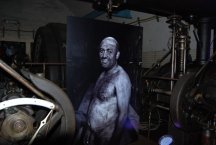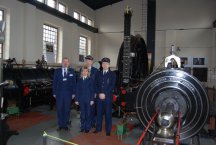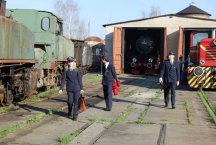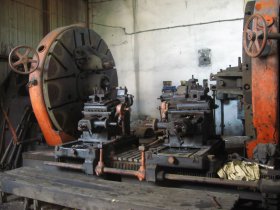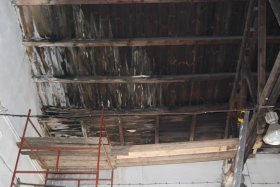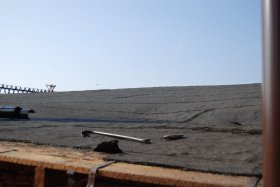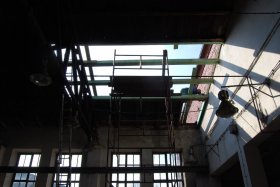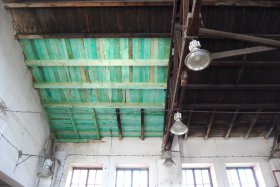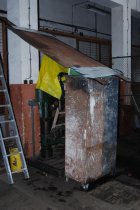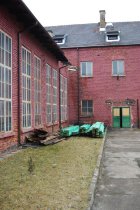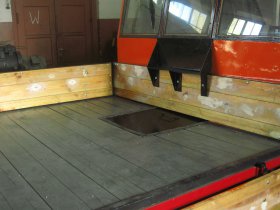International Tourism Fair of Industrial Heritage and Underground Tourism in Zabrze
On 14-16 April we were present at the third International Tourism Fair of Industrial Heritage and Underground Tourism in Zabrze. At our stand we have presented a selection of photos of our collection and a few small exhibits related to railways and travel. The attracting elements were glowing oil lamps, carried by us active conductor carbide lanterns and – of course, a railway uniforms from different eras. Indeed, the “railway men” had to have a good presentation among uniforms of miners from Poland and Saxony …
Within three days, during the fairs there was presented a number of exhibitors from Poland, Czech Republic, Slovakia, Saxony and France. But the most visible and attractive tourist offer was the hosts offer – presenting the individual elements of the Silesian Industrial Heritage Route. The city of Zabrze was presented interestingly by two coal mines – Historic Coal Mine “Guido”and Heritage Mining Park “Queen Louise”. Interesting presentations were on film presenting the water supply equipment belonging to the Upper Silesia Water Plant Company-Zawada Karchowice. Central Museum of Firefighting in Mysłowice was also richly presented.
PSMK on this type, prestigious trade fairs exhibited for the first time. We were also the only one strictly railway exhibitors, although it has to be admitted that the topic of historic railway has been highlighted in materials of the city Mulhouse (France), where there is one of the larges Europe railway museum, in the brochure devoted to Heritage Route (here presented Vienna Railway Museum in Czestochowa – so dull recently considered by decision-makers) as well as in publications of Museum of Nature and Technology in Starachowice (narrow gauge railways brochures about the Starachowice area).
This year fair edition, somehow more modest than the previous one (probably due to the change of the date of organization) again gave the opportunity to both visitors and exhibitors to see the achievements in the protection of historical heritage of technic. From the proposals, presentations and materials it could be seen clearly, for example that unlike many (even if so established) institutions – the Upper Silesia region, local authorities and cities are keen interest in cultivating the technical tradition – so important for all of us – the present generation of the industrial era . It is unfortunate that the experiences and achievements of Upper Silesia inhabitants do not derive inspiration stewards of other regions of our country. And yet the history is not just battlefields, tombs and palaces of princes – but all above worth to commemorate the daily effort of millions that went in the past, our fellow citizens. Why this effort – ours – is to be forgotten, nameless?
This message was particularly evident during the exhibition of photographs, depicting a variety of people working in factories in eight European countries. The guiding idea of those photographs was highlighted by the place – exhibition was organized … 320 meters underground, in the compressor chamber preserved Historic Coal Mine “Guido. ”
For our team, participating in fairs, in addition to promoting PSMK was also an opportunity to participate in the seminar “Industrial heritage in tourism policy for sustainable development“, organized under the VIII International Scientific-Practical Conference (Zabrze 13th April) and in number of interesting excursions. To learn how the “technical-heritage” industry works, we visited “Queen Louise”, Historic Coal Mine “Guido” and the friends of the Society for the Organization of Heritage Park and the Protecting Heritage Railway in Pyskowice.






